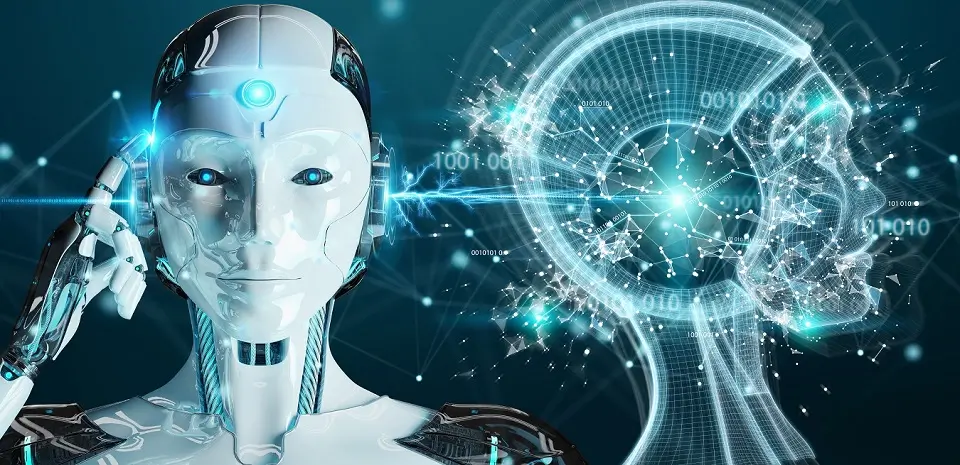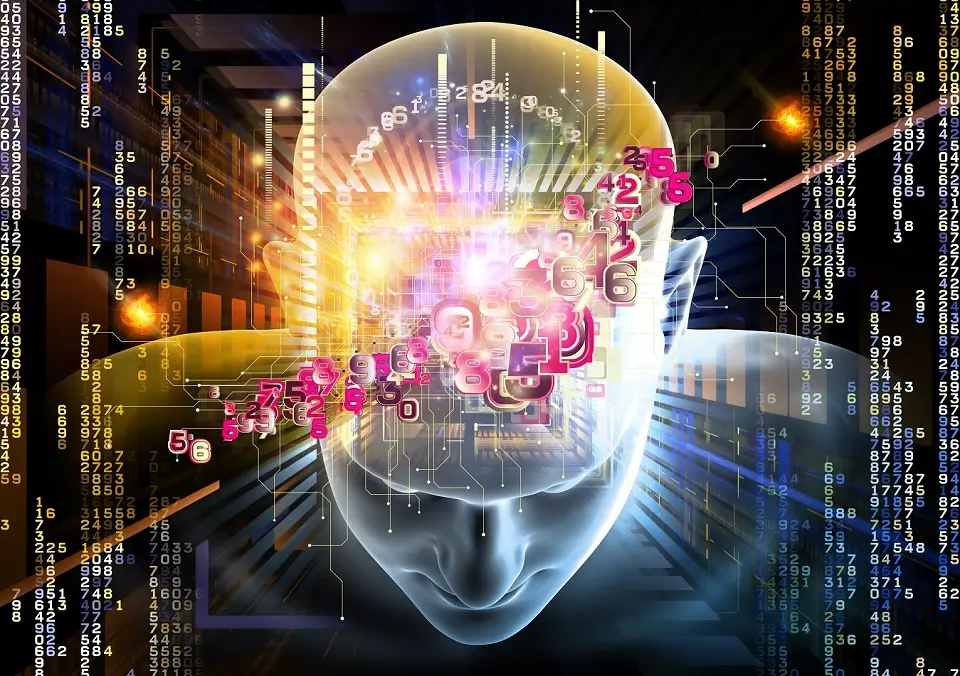Theory of Mind AI in Artificial Intelligence

Let’s first understand what the “Theory of Mind” is before we get into what the “Theory of Mind AI” is in the world of Artificial Intelligence. According to Wikipedia, in psychology, the Theory of Mind is as follows:
“Theory of Mind refers to the capacity to understand other people by ascribing mental states to them, surmising what is happening in their mind). These states may differ from one’s state and include beliefs, desires, intentions, emotions, and thoughts.”
Theory of Mind enables us to understand that what other people think may differ from how we think. Young children are more selfish. However, it’s not due to the choice, but more so because they are less emotionally developed to understand the mental state of others. As we age, we develop, and so does our Theory of Mind.
What is the Theory of Mind AI?
The way humans can infer others’ mental states is a prerequisite for Artificial Intelligence. This is to make the machines with the Theory of Mind integrate into human society.
To recap the definition of Artificial Intelligence for the purpose of this article:
Artificial intelligence (AI) is the ability of a computer or a computer-controlled robot to perform tasks that humans usually do as they require human intelligence.
For example, autonomous cars will need to have the capacity to understand and infer the mental states of human drivers and pedestrians. This capacity of artificial intelligence helps in predicting behavior and reducing unfortunate events such as car crashes.
AI has evolved immensely over the last decade, taking advantage of the increased computation power and the breakthroughs of deep neural models. The Theory of Mind can be broken down by its fundamental aspects and social interaction, which are as follows:
- Fundamental aspects of AI for robotics include the process of learning, using advanced pattern recognition, and knowledge from models to develop intelligence with common sense.
- Social interaction includes understanding human social dynamics and morals that can be implemented within our social life, showing empathy, and natural social behaviors.
Different Levels of AI:
We need to understand the different types of AI before we dive into the uniqueness of the Theory of Mind AI. The different levels of AI are:
- Reactive: Has no memory and predicts outputs based on the input it receives. They will respond the same way to identical situations. Netflix recommendations and Spam filters are examples of Reactive AI.
- Limited Memory: The next level of AI uses limited memory to learn and improve its responses. It absorbs learning data and improves over time with experience, similar to the human brain.
- Theory of Mind: This is currently the third level of AI and understands the needs of other intelligent entities. Machines aim to have the capability to understand and remember other entities’ emotions and needs and adjust their behavior based on these. This capability is like humans in social interaction.
- Self-awareness: This is the last level of AI, where machines have human-like intelligence and self-awareness. Machines will be able to be aware of others’ emotions, mental states, and their own. At this point, machines will have the same human-level consciousness and human intelligence.
Theory of Mind AI vs. AI
So, what makes the Theory of Mind AI differ from the AI we all know? Theory of Mind AI is still under heavy research and development. However, we can infer that the most significant difference is that the computer embedded with Theory of Mind AI will have a better understanding of the entities it interacts with.
Theory of Mind AI will require more extensive development in current AI branches to truly understand human intelligence. For example, it could build a neural network. However, a neural network for Theory of Mind AI will have key differences compared to current neural networks used in Limited Memory AI.
For the above, the computer must understand that human beings have a mind, which can be altered depending on several factors. This leads to the computer being able to distinguish each unique individual’s emotions, beliefs, and needs.
Theory of Mind AI Characteristics:
Theory of Mind AI is still undergoing heavy research and development; therefore, its characteristics will continue to evolve over time. However, based on the information we currently have, we can expect the following characteristics:
- Computers embedded with the Theory of Mind AI can infer the objectives of entities around them.
- Theory of Mind AI systems will be able to understand the importance of their awareness and the different consequences it could lead to.
- Robots or Theory of Mind AI systems will communicate with human beings better than the current generation of AI, which cannot explain their actions.
- Theory of Mind AI will be implemented with a Machine Learning system that can explain decisions in various languages, helping the user (human being) understand.
- A Robot or Theory of Mind AI system should be able to understand the intention of other similar Robots or Theory of Mind embedded systems.
Implementations of the Theory of Mind AI:
As mentioned before, the research and development on the Theory of Mind AI is ongoing. However, examples of its implementation are still in the pipeline.
One example is “ToMnet“, an acronym for “Theory of Mind Net”, by Neil Rabinowitz, a research scientist at DeepMind in London. He and his team have created a Theory of Mind-powered AI system. This system observes other AI systems and learns their characteristics and functions.
It consists of three Artificial Neural Networks (ANNs). ANN is an attempt to imitate the network of neurons that make up the human brain. This imitation of neuron networks enables computers to have the same ability to make decisions in a human-like manner. ANNs are ingested with new data, allowing them to learn and understand new relationships and revise current ones.
These three ANNs comprise small computing elements and connections that learn from experience, intending to resemble the human brain. The 1st ANN learns the tendencies of other AIs based on their past actions. The 2nd ANN builds a better understanding of the current AI system’s beliefs. At the same time, the 3rd ANN takes the output from the other two ANNs and predicts the AI’s next moves.
Challenges that the Theory of Mind AI faces:
Anything still going through the research and development stage will face challenges. Following are some such challenges with the Theory of Mind AI:
Figuring out the Human Mind
Scientists are still trying to figure out how human beings’ emotional capacity levels and the beliefs of others are understood and determined. We all know that not everybody is the same. People deal with situations differently; some are correct, and some understand the situation incorrectly. This gap is the bridge impacting the development of Theory of Mind AI systems.
This involves the Theory of Mind AI-powered system understanding what verbal and non-verbal cues should be considered. It is difficult to differentiate these based on elements such as emotions, as there are different levels of emotional maturity, regardless of age. We need to consider different factors to interpret why human beings react the way they do. We must understand each individual’s uniqueness, as not everybody is the same.
Building Mental Models
Theory of Mind AI involves building mental models of other intelligent entities, which are human beings at this point. The aspect of how Theory of Mind AI-powered systems will use meta-learning to build these mental models of human beings and robots.
Meta-learning, also known as learning to learn, is the science of observing how different machine learning models perform on learning various tasks. This Meta-learning enables them to use their learning experience or meta-data to learn new tasks effectively.
DARPA’s Artificial Social Intelligence for Successful Teams (ASIST) program aims to develop the fundamental AI theory and systems. The objective is to understand and implement the basic machine-social skills necessary for effective machine-human collaboration. Furthermore, they aim to create AI agents that demonstrate the Machine Theory of Mind and participate effectively in a team through observation and understanding of their surroundings and human entities.
Future of Theory of Mind AI
As the research and development in “Machine Theory of Mind” continues and matures, it will create machines that can think independently. These machines will experience emotions like human beings and conscious machines that work effectively in society.
Frequently Asked Questions
Q1. How do current implementations of Theory of Mind AI, like ToMnet by DeepMind, actually perform in real-world applications, and what specific tasks have they been used for?
Answer: Theory of Mind AI, such as DeepMind’s ToMnet, has primarily been explored in research and experimental contexts rather than deployed in widespread, real-world applications.
These implementations are used to study and model how artificial agents can understand and predict the actions of other agents, taking into account their beliefs and desires.
The applications mainly focus on enhancing AI’s social reasoning capabilities, which could eventually be applied to improve human-AI interaction, collaborative robots, and social simulations. However, specific real-world deployments and tasks are still under development and not explicitly detailed in widely available resources.
Q2. What ethical considerations arise from developing and deploying Theory of Mind AI, especially regarding privacy and autonomy, and how are researchers addressing these concerns?
Answer: Developing and deploying the Theory of Mind AI raises significant ethical considerations, particularly concerning privacy and autonomy.
These concerns stem from the potential of Theory of Mind AI to predict and understand human behaviors and intentions. Therefore, it could lead to intrusive surveillance or manipulation.
To address these concerns, researchers are focusing on ethical AI development practices. These focus areas include transparency, accountability, and user consent.
They also emphasize the importance of incorporating ethical considerations into the design phase and engaging with diverse stakeholders. These measures would ensure the technology is used responsibly and for the benefit of society.
Q3. How does Theory of Mind AI interact with and differ from other emerging AI technologies, such as Generative AI and Reinforcement Learning, in terms of capabilities and limitations?
Answer: Theory of Mind AI uniquely focuses on understanding and predicting the mental states of others, a capability not directly aimed at by other AI technologies.
Generative AI, in contrast, creates new content based on learned patterns, while Reinforcement Learning optimizes decision-making through rewards.
Theory of Mind AI’s capability to infer intentions and beliefs allows for more nuanced social interactions, differing from Generative AI’s content creation and Reinforcement Learning’s goal-oriented behaviors. However, it faces limitations in accurately interpreting complex human emotions and intentions, a challenge less pronounced in other AI domains.


Nisha Arya is a Data Scientist and Technical writer from London.
Having worked in the world of Data Science, she is particularly interested in providing Data Science career advice or tutorials and theory-based knowledge around Data Science. She is a keen learner seeking to broaden her tech knowledge and writing skills while helping guide others.


